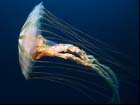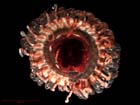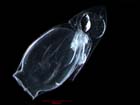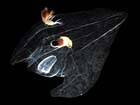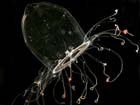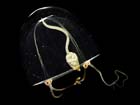Cnidarians - Jellyfish & Kin
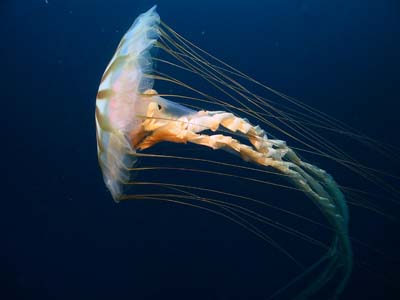
Cnidarians get their name from the “stinging nettle” cells that are unique to this group. This group contains the true jellyfish, the medusae which look very similar to jellyfish, plus a colonial subgroup, the siphonphores, that contains animals like the Portuguese-man-o-war. Some species have powerful stinging cells that cause pain, and even death in humans. With few exceptions, the group is predatory and capable of eating any plankton or fish they can catch. Some species carry symbiotic algae in their tissue that produce part of the energy needed by the animal, very similar to what their cousins the corals do.
Within the water column they can be common, frequently being a large but variable proportion of the volume of zooplankton collected by nets. Some species have relatively few predators, while others are preyed on heavily by other cnidarians, and fish such as mackerel and chum salmon.
Cnidarians swim by contracting their bell which pushed them forward. This swimming activity whips the tentacles around the bell through the water where they may hit food. Longer tentacles are pulled along behind the animals like sticky fishing line. Once stung, prey are passed to the mouth and eaten whole.
This is among the most primitive multi-cellular groups, basically two layers of skin with jelly in between them. They are also characterized by a radial symmetry only found in a few other phyla. Most species undergo a life cycle where a bottom dwelling colonial stage produces the pelagic forms which release either eggs or sperm. The fertilized eggs then attach to the bottom to complete the cycle. Some species have eliminated the benthic phase, and simply bud off new individuals or have their colonial phase within the plankton.
This group contains many of the larger members of the zooplankton community. Medusae can be less than 1 mm in diameter, while the bells on some sub-arctic jelly-fish are close to 0.5 m across with feeding arms and tentacles several meters long. Cnidarians can be found all the way from the surface to the bottom of the oceans, although most species have a specific range of depth over which they are found. We know little for sure about how long most species live in the Arctic, although smaller species are thought to have appers only seasonally.
Page Author: Russ Hopcroft
Created: January 1, 2010

